Cruise vacation
Cruise travel has transformed from a once-in-a-lifetime luxury to a mainstream way to explore the world with ease, comfort, and style. Whether you're dreaming of the turquoise waters of the Caribb...
Read moreWe recognize that Disney vacations are not just an investment, but often the highlights of our lives, and we take that responsibility seriously. We want to ensure you have the best vacation experience. Interested in a job in travel? Click here to learn: How to Become a Disney Travel Agent
Jump to section: A B C D E F G H I J K L M N O P Q R S T U V W X Y ZSee our Disney travel agents near me.
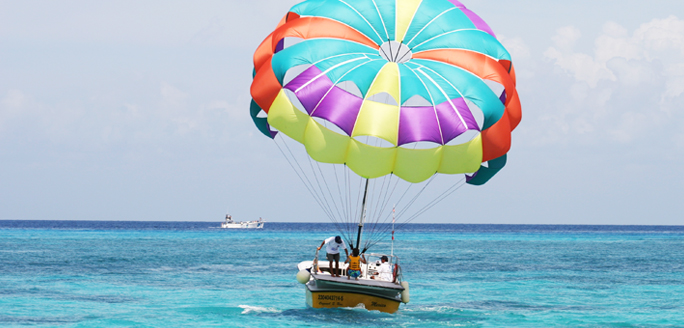
Beautiful Isla Cozumel is an immensely popular vacation and diving destination located in the Caribbean Sea off the Riviera Maya coastline in Mexico. The island is relatively small, only 10 miles wide and 30 miles long but packs a big punch with many high-end resorts and a wealth of diving opportunities for travelers. It boasts great beaches, nice people, and safe streets, with prices comparable to other Mexican tourist destinations.
Most visitors travel to Cozumel to explore the underwater gems. The main town and dive operations are on the west side of the island, which is the more touristy area. The east side is less developed with beautiful beaches, big waves and rocky outcrops over the ocean. If the waves are sufficient you can find a few small blowholes. Every few miles, you will also find a restaurant along the beach.
Cozumel is a diver's paradise. Visit any of the reefs in Cozumel for a colorful picture of ocean life. Novice divers should plan to go to Columbia Reef; Columbia shallow, is one of the three dives on this reef suitable for beginners. In the sandy areas of the surrounding shallows, loggerhead turtles and southern rays are often spotted. Punta Sur Reef is recommended for more advanced divers. The Devil's Throat leads into a vast cavern called the Cathedral via an underwater passageway. San Francisco Reef allows divers to see colorful fish of all varieties.
Beautiful Cozumel is a great place for not only experienced divers, but also for couples and families looking for a getaway that is sure to provide them with a top-notch beach vacation.
Valid passport needed for entry
Spanish (English is widely spoken)
Mexican peso (American dollars are widely accepted)
Year-round temperatures average 73-81° F

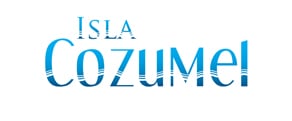


Cancun, Riviera Maya and Cozumel are three of the best tourist destinations across the country of Mexico. The region’s riviera is known worldwide for its idyllic landscapes, activities of all kinds, cuisine of great proportions and its incomparable beauty of Mayan monuments. Cancun, Riviera Maya and Cozumel have options for all kinds of travelers, from those who expect the ultimate in luxury to those who prefer the simplest places in contact with nature.
ALG Vacations brands stand behind Cancun, Riviera Maya and Cozumel and believe in the region’s importance to global tourism supported by the travel agent community.
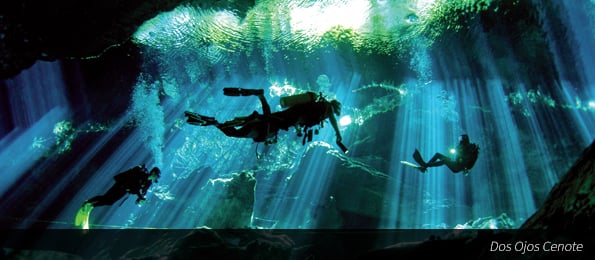
As one of the most popular tourist destinations in Mexico, Cancun attracts about four million visitors each year to its pristine white beaches, its top-notch resort and hotel scene and its crystal blue water. The city is home to hundreds of hotels that line the beaches in an area called the hotel zone, attracting all types of guests, with its award winning restaurants, fabulous shopping and great night life. For those looking for adventure, the MUSA (Underwater Museum of Art), the reefs and the mystic inland cenotes (deep natural wells) attract diving enthusiasts to explore the rich underwater worlds of Cancun.
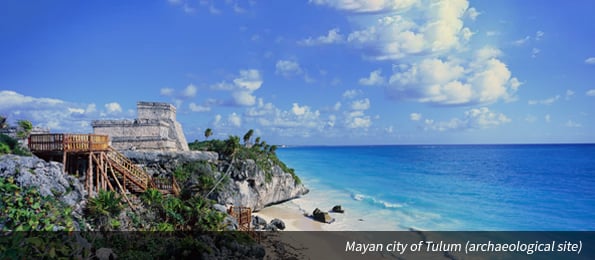
Stretching down the Yucatán Peninsula's Caribbean coast lies the Riviera Maya, also known as the Mayan Riviera. The Riviera Maya coastline stretches from the southern end of bustling Cancun to the north, down south to the Mayan Ruins in Tulum, and in the center of the coastline, the once sleepy fishing village turned popular city of Playa del Carmen. The coastline today is dotted with an abundance of all-inclusive resorts as well as smaller boutique hotels perched on the idyllic sandy beaches, this coastline is most historically notable for its Mayan past. The pre-Hispanic civilization lived throughout this region and the impressive archeological ruins remain a popular tourist attraction today including Tulum and COBA.
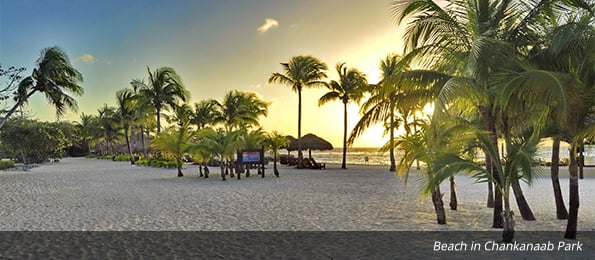
Beautiful Isla Cozumel is an immensely popular vacation and diving destination located in the Caribbean Sea off the Riviera Maya coastline in Mexico. The island is relatively small, only 10 miles wide and 30 miles long, but packs a big punch with many high-end resorts and a wealth of diving opportunities for travelers. It boasts great beaches, nice people and safe streets, with prices comparable to other Mexican tourist destinations. Most visitors travel to Cozumel to explore the underwater gems. The main town and dive operations are on the west side of the island, which is the more touristy area. The east side is less developed with beautiful beaches, big waves and rocky outcrops over the ocean.
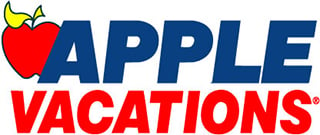
Apple Vacations supports Cancun, Riviera Maya and Cozumel and carries more vacationers to the destinations than any tour operator worldwide. Through long-standing relationships with airlines and hotel companies, Apple Vacations is able to offer customers to Cancun, Riviera Maya and Cozumel the best value and service, along with the widest range of product offerings, including nonstop flights from 20 U.S. cities and scheduled airline service from departure cities coast to coast.

Funjet specializes in providing travelers with vacation packages that meet their needs, delivered with unparalleled customer care and at an exceptional value. With over 40 years of experience and hundreds of destinations, Funjet Vacations creates memories and helps each traveler do something they'll never forget. Funjet has been committed to the success of travel professionals. We take travel agent feedback to heart and do everything we can to simplify your success – and your profitability!

Southwest Vacations provides your clients with an affordable way to create a personalized vacation package. You can select their round trip Southwest Airlines flights, hotel accommodations from budget to luxury, options such as rental cars, ground transportation, area attraction passes, show tickets, and more.

The confidence Travel Impressions has in Cancun, Riviera Maya and Cozumel is unwavering. We wear our title of Best Tour Operator, Mexico from TravelAge West’s Editor’s Picks with great pride and are wholly dedicated to providing high quality standards and service for vacations to Cancun, Riviera Maya and Cozumel. We give agents access to 42 hotels and resorts in Cancun, 79 in Riviera Maya and 14 in Cozumel.

United Vacations® combines the best fares on United Airlines® with everything you need to create the vacation experience your clients dreamed of. With over 50,000 resorts and 10,000 activities in over 400 destinations, the world is in your hands. When you book a vacation with us, your clients can earn MileagePlus® bonus award miles in addition to credited flight miles.

Cozumel, Mexico, should not be compared to Cancun, the splashy resort just 40 mi/65 km to the north and one of its nearest neighbors. In the past, Cozumel had a laid-back, sedate atmosphere, and its superior fishing, snorkeling and diving gave it a definite edge.
Today, Cozumel retains its unique vibe and remains a better choice for those who don't like planned resorts, but the island is no longer an escapist's paradise. The snorkeling, diving and fishing are still great, but no one would mistake present-day Cozumel for the sleepy backwater it once was.
One reason is cruise ships. Cozumel is the most popular cruise stop in Mexico and has hosted as many as 33 ships in one week. When more than one ship looms on the horizon, Cozumel's restaurants, bars and shops fill with day-trippers.
Still, Cozumel can be fun, especially for travelers interested in exploring its coral reefs on scuba and snorkeling outings. After all, it's home of the largest reef in the Americas. The island's only town, San Miguel, has retained much of its pleasant, small-town atmosphere. Those with enough time for a day trip will find the Mayan ruins of Tulum and Chichen Itza, on the Yucatan mainland, within striking distance.
Sights—Deserted beaches on Cozumel's rugged east coast; sea and jungle vistas in the Faro Celarain Eco Park; the Maya ruins at San Gervasio.
Museums—The Museo de la Isla de Cozumel with its haunting Maya sculptures; the Navigational Museum with its unique navigational exhibits; the San Miguel Pax Music Museum with its collection of almost 1,000 different musical instruments from around the world.
Memorable Meals—Pasta with fresh seafood in Guido's romantic courtyard.
Late Night—Frolic and fun at Senor Frog's and Carlos'n Charlie's; break a sweat dancing at OFF Site; street festivities during Carnival.
Walks—The malecon, San Miguel's pretty seaside promenade; the botanical gardens in Parque Nacional Chankanaab; the seaside trails and views of Mayan ruins in Faro Celarain Eco Park.
Especially for Kids—Dolphin encounters at Parque Nacional Chankanaab; underwater tours with Atlantis Adventures submarines.
Cozumel is Mexico's largest island—33 mi/53 km long and 8 mi/13 km wide. The island is very flat. From the mainland, the tall hotel buildings appear to float on the horizon. Shops, restaurants and nightlife are concentrated in San Miguel, the only town, which is on the west coast of the island.
Cozumel has two highways. One makes a half-circle around the southern end of the island. Heading south out of San Miguel, it's a four-lane road for about 5 mi/8 km before narrowing to two lanes. The other highway is the Carretera Transversal (the cross-island highway), which is a well-maintained road that cuts straight through the jungle-covered center of the island and connects the east and west coasts.
It's hard to get lost in downtown San Miguel if you know the layout: Avenidas (avenues) run north-south, and calles (streets) run east-west. Except for the large thoroughfares, such as Avenida Melgar (also known as the Malecon or waterfront), Calle 11 and the island highways, most roads are one way.
The oldest Maya ruin on Cozumel dates from AD 300. The Maya believed that Cozumel was the spiritual home of Ixchel, the goddess of fertility and love. Maya women and men were said to make a pilgrimage to the island at least once in their lifetimes to ensure the healthy birth of their children.
The name Cozumel comes from the Mayan word Cuzamil-Peten, which means "Land of the Swallows." (Ixchel was often depicted with swallows at her feet.)
Cozumel was a quiet place until the early 1960s, when it was first visited by Jacques Cousteau, the well-known underwater explorer and documentary filmmaker. He put the island on the map as one of the great diving destinations in the world. The second-largest reef system in the world, the Mesoamerican, starts here, snaking its way south to as far away as Honduras.
In recent decades, Cozumel has experienced the tourism boom that has transformed the northern Yucatan, and it has become an increasingly popular destination for cruise ships.
The El Cedral Festival was started about 150 years ago by Casimiro Cardenas. He survived an attack during the War of the Castes by clutching a small wooden cross and started the festival to honor its power.
Hernan Cortes, the Spanish conqueror of the Aztec Empire in the 16th century, made his first landfall from Cuba at Cozumel. Soon after the Maya population was decimated by smallpox carried by the Spaniards.
Prior to the arrival of Cortes, a Spansh sailor named Gonzalo Guerrero was shipwrecked at Cozumel along with Franciscan friar Geronimo Aguilar. The pair were imprisoned by a Maya chieftain. A few years later, Guerrero married the daughter of the chieftain and their children were the first mestizos (mixed race) of New Spain, from which the majority of Mexicans are descended.
Cozumel was a sacred island according to its first settlers, the Maya. They dedicated the island to the moon goddess Ixchel and built many temples in her honor.
Cozumel was a favorite lair for some of the most notorious pirates along the Spanish Main. Henry Morgan, the most famous of them, went on to become the British governor of Jamaica as Sir Henry Morgan.
A large population that is descended from the ancient Maya lives in Cozumel—you'll know them by their Mayan dialect, round faces, dark almond-shaped eyes, coal-black hair and short stature. The women wear traditional embroidered huipil dresses, which look like sacks and help keep them cool in the heat of the day.
Black coral used to be harvested by native divers who plunged more than 100 ft/31 m beneath the surface of the ocean without the use of air tanks. Now the coral is on the endangered list, and its sale is prohibited by international law.
The island's airport was used as a U.S. Navy base during World War II.
Cozumel's Ironman Triathlon each fall is considered the best in the country and draws scores of international participants.
Biodegradable sunscreen is the only sunscreen permitted in Cozumel waters. Most venues will provide it free of charge or for a small fee.
Cruise ships visiting Cozumel dock at the International Pier, Punta Langosta or Puerta Maya (the most developed; http://www.puertamaya.com), all of which have been reconstructed to withstand a Category 5 hurricane. For more information on each facility, see http://www.cozumelmycozumel.com/Pages/CozumelCruisesBasics.htm.
During peak times, some ships anchor offshore there and tender passengers to land. These are marked on cruise ship itineraries as fundeo.
Punta Langosta pier is a 10-minute walk, and the International Pier is a short taxi ride or a 2-mi/3-km walk along the waterfront to San Miguel. Puerta Maya's 9-acre/4-hectare cruise center has a transportation hub that can accommodate dozens of taxis and tour buses. The three piers have shopping malls, internet access, Wi-Fi, taxis and tour stands.
A tourist-information office on the municipal pier and a booth in the nearby park are open daily 8 am-9 pm. The island's main tourism office is on the second floor of the Plaza del Sol shopping center on the east side of the town plaza, half a block from the municipal pier. It's open Monday-Friday 8 am-3 pm. Phone 987-869-0212. http://www.islacozumel.com.mx.
Typical tours may include visiting the Maya ruins at Tulum; outdoor adventures such as snorkeling, scuba diving, sportfishing, a dune-buggy tour, a tequila history tour or a jungle tour on horseback; golf; or a shopping expedition to Cancun or Playa del Carmen.
Cruise passengers can take the 45-minute ferry to see Playa del Carmen's shops, stalls, vendors, restaurants and bars, where a party-hearty atmosphere rules day and night. The main shopping street in Playa is Fifth Avenue, and it's got a few familiar names such as Starbucks and Tommy Bahama. There are also shops and stalls touting Mexican wares. Do be prepared to bargain in the markets and stalls—not, however, in retail stores. Some passengers opt for Xcaret, an archaeology-ecological Mexican theme park, or Xel-Ha, an immense water park built around a natural lagoon. Both are a short drive from Playa del Carmen.
Note: Long trousers, sturdy shoes, socks and long sleeves are best for jungle treks. Take along plenty of sunscreen, water and insect repellent, and don't forget to spray your ankles. A hat that shades your face from the sun is also a good idea.
Vincent Vacations - Authorized Cozumel Vacation Planner
Questions? Call us at
1 (888) 976-0061
For Groups of 10
or more rooms, or 8 or more Cabins, please use of Group Form
Click Here for our Group Department
From our storefronts to your destination, we are your dedicated, debt-free, and experienced travel partner.
We are a proud USA-based, 100% female-owned business. Operating completely debt-free, we offer you the stability and peace of mind you deserve when booking your dream vacation.
As a Top 20 Agency with the elite Signature Travel Network, we unlock exclusive perks, upgrades, and amenities for you that you can't find anywhere else.
Serving clients since 2013 with leadership selling travel since 2002. Our team of professionals brings decades of real-world travel experience to your itinerary.
While we have physical storefront locations you can visit, we are fully equipped to book travel for clients residing in every state across the USA.
We are a company that can be trusted. We advocate for you from the moment you book until you return home, ensuring a seamless experience.
Click on a location below to learn more. We recognize that vacations are not just an investment, but often the highlights of our lives, and we take that responsibility seriously. We want to ensure you have the best experience.

All of these are signs that you are a great fit to become an independent travel agent, and turn your love of travel from passion into profit!
Learn MoreOur motto at Vincent Vacations is, we go so you know! We want to ensure you have the BEST experience, whether it's a river cruise, or a corporate group incentive trip, we want to ensure your vacation is a success.
We serve customers all across the USA
Debt free and in business since 2013. Vincent Vacations has agents in Dallas, Kansas City, Houston, Shreveport, Little Rock, Roswell, Oklahoma City and more locations.

Travel agents can help save time and stress by doing the research and handling all your bookings for you. An experience travel agent is best at finding great deals and packages, as well as providing you with helpful information and tips. They can also help you plan special activities and experiences that you may not have thought of on your own. All in all, using a travel agent can be a great way to make sure you get the most out of your trip.
In travel since 2002, and in business since 2013, our travel team serves clients all over the US! Planning a vacation away from home takes a great team. We have taken the time to build a team of dedicated, smart, hard-working personnel who are each committed to excellence and service. We work side-by-side, creating and ensuring INCREDIBLE vacation experiences for you and your group. Our store front in-office team, and our travel consultant independent contractors, work all around the US.


In business since 2013, we are your #1 source for travel!
Free Vacation Package Quote